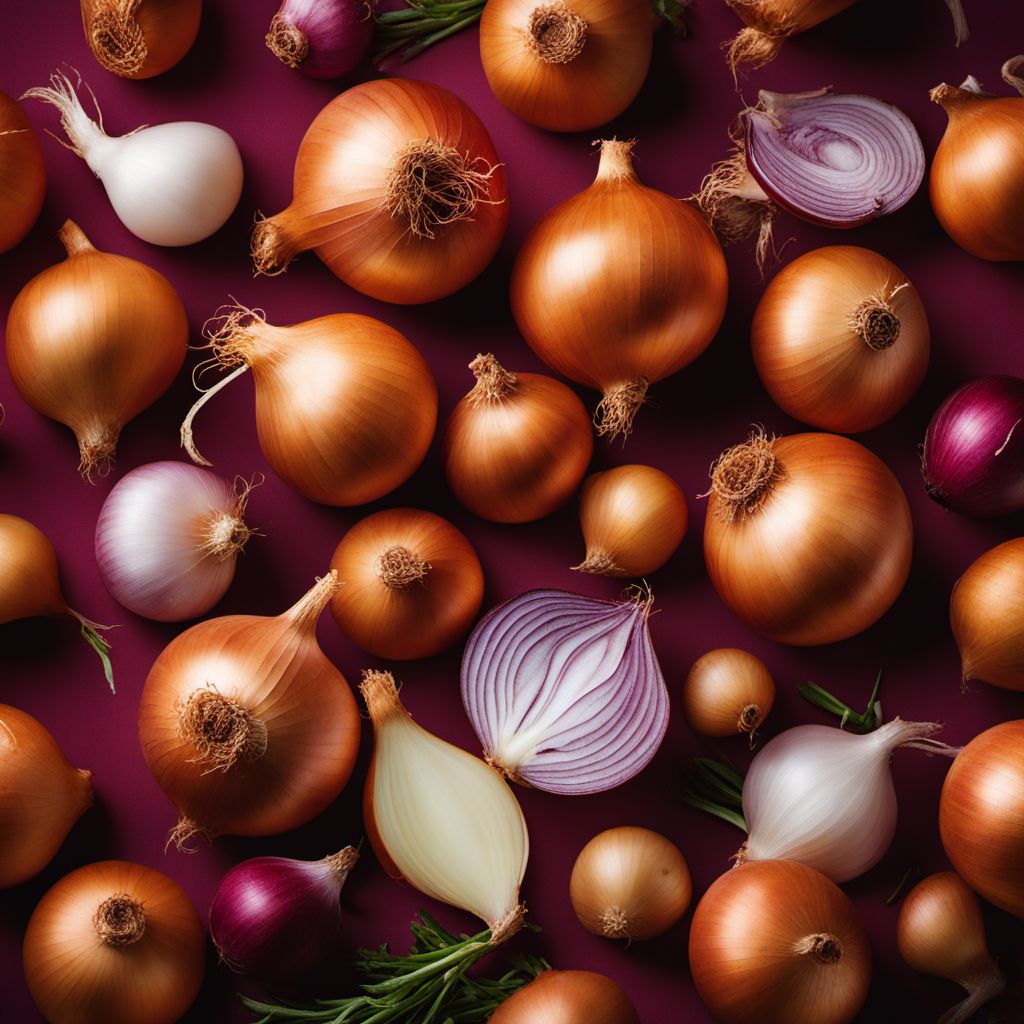
Ingredient
Onions and similar-
The Versatile Essential: Onions and Similar
Onions and similar vegetables, such as shallots, leeks, and scallions, belong to the Allium family and are characterized by their pungent aroma and distinct flavor. They have layers of papery skin and a bulbous shape, with a range of colors from white to yellow, red, or purple. These versatile vegetables can be enjoyed raw or cooked, and their flavor can vary from mild and sweet to strong and sharp.
Origins and history
Onions and similar vegetables have been cultivated and consumed for thousands of years. They have a rich history and are used in diverse culinary traditions worldwide. Onions, in particular, have been cultivated since ancient times and were highly valued by ancient Egyptians, Greeks, and Romans for their medicinal properties and culinary versatility. Over time, different varieties and cultivars have been developed, each with its own unique flavor and characteristics.
Nutritional information
Onions and similar vegetables are low in calories and fat but rich in essential nutrients, including vitamins C and B6, folate, and potassium. They also contain antioxidants and compounds that may have potential health benefits, such as anti-inflammatory and antimicrobial properties.
Allergens
Onions and similar vegetables may cause allergic reactions in some individuals, particularly those with sensitivities to Allium vegetables. Symptoms may include skin rashes, digestive issues, or respiratory problems. It is advisable to consult with a healthcare professional if you suspect an allergy or intolerance.
How to select
When selecting onions and similar vegetables, choose ones that are firm, with dry, papery skin. Avoid any signs of mold, soft spots, or sprouting. The size and color can vary depending on the specific variety, so consider your recipe requirements. For shallots, look for bulbs that are plump and firm, without any signs of shriveling or browning.
Storage recommendations
To maximize the shelf life of onions and similar vegetables, store them in a cool, dry, and well-ventilated area. Avoid storing them near potatoes or other vegetables that release moisture, as this can cause spoilage. Some varieties, such as scallions or leeks, can be stored in the refrigerator for extended freshness.
How to produce
Onions and similar vegetables can be easily grown in home gardens or containers. They require well-drained soil, ample sunlight, and regular watering. Planting sets or seedlings is a common method for home cultivation. However, it is important to research the specific requirements of each variety and follow proper planting and care instructions.
Preparation tips
Onions and similar vegetables can be used in a multitude of ways in the kitchen. They can be sliced or diced and used as a base for soups, stews, or sauces. They can be caramelized to bring out their natural sweetness or pickled for added tanginess. Raw onions can be added to salads, sandwiches, or salsas for a refreshing crunch and flavor.
Culinary uses
Onions and similar vegetables are incredibly versatile and are used in a wide range of cuisines and dishes worldwide. They are essential in classic recipes such as French onion soup, Italian pasta sauces, Indian curries, and Mexican salsas. They can be found in almost every cuisine, adding depth and flavor to both simple and complex dishes.
Availability
Onions and similar vegetables are widely available and cultivated in many regions around the world. They are grown in countries such as the United States, China, India, Mexico, and various European countries. They are commonly found in grocery stores, supermarkets, and local markets throughout the year.

